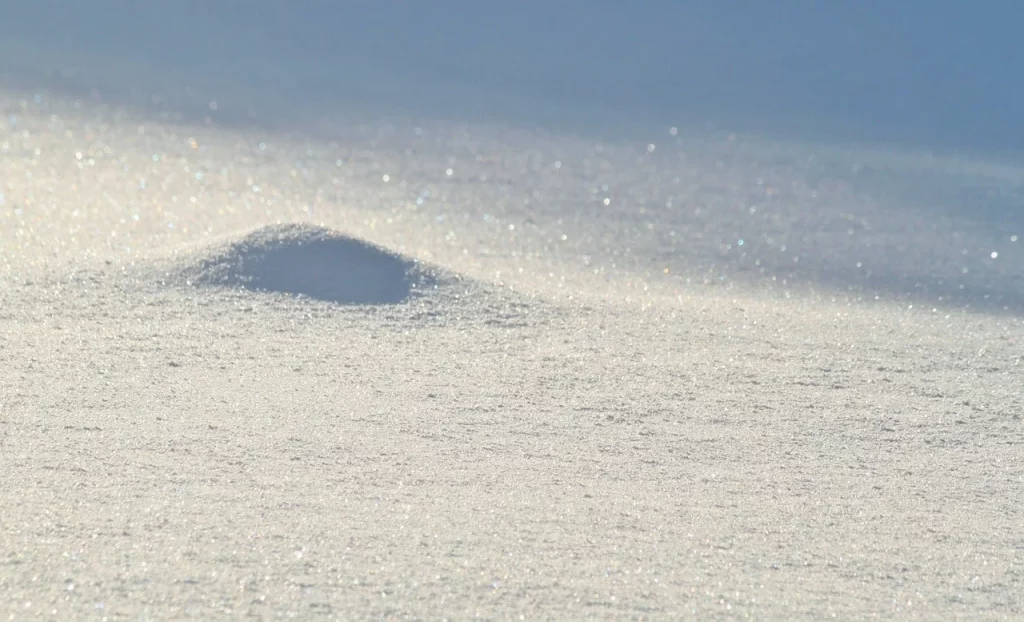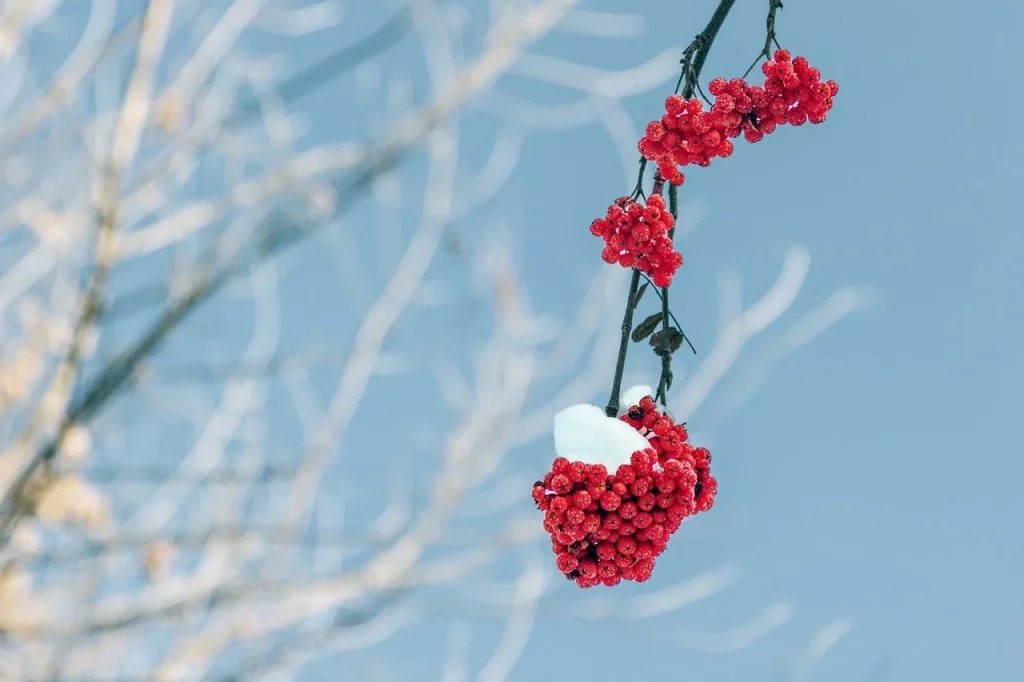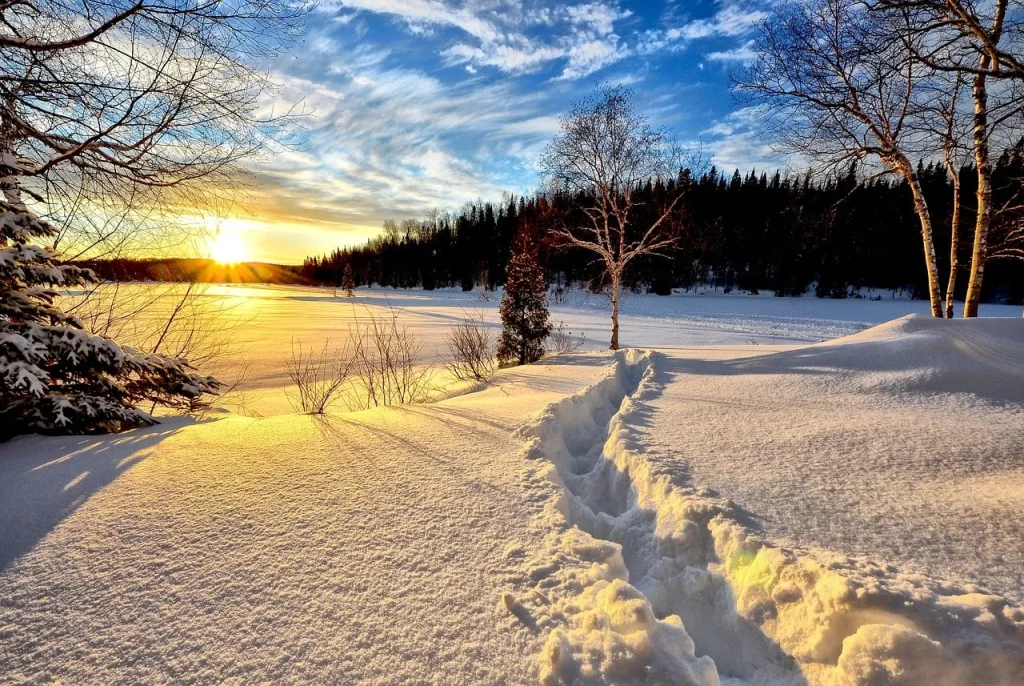Have you ever wondered what makes snowflakes dance from the sky like tiny, icy ballerinas? Snow is more than just a winter blanket that covers the streets and mountains; it’s a fascinating natural phenomenon with secrets as unique as its crystals.
From the science behind its formation to the joy it brings during snowball fights, snow has a special place in our hearts and climates. It’s funny to think that something so cold can warm our spirits during the winter holidays.
But have you ever stopped to ponder what makes snow so special, beyond its ability to cancel school? Let’s find out.
To appreciate the beauty of a snowflake, it is necessary to stand out in the cold.
Aristotle
Snow Facts
Dive into the fascinating world of snow with these interesting facts. Keep your attention, because I created a quiz for you at the end of this article so you can prove your expertise on this chilly subject.
- Under certain conditions, it can sound like a sonic boom when a large snow slab breaks and slides.
- The largest snowflake ever recorded was 15 inches wide and 8 inches thick.
- In some areas, pink snow, also known as “watermelon snow,” occurs due to the presence of algae.
- The speed at which it falls can range from 1 to 6 feet per second, depending on the crystal structure and the wind.
- Lightning can occur during a snowstorm, a phenomenon known as thundersnow.
- There are places on Earth where it has never been recorded, such as parts of the Sahara Desert.
- Mount Baker, in Washington State, holds the record for the most snowfall in a single season, receiving 1,140 inches.
- Acoustically, it can create silence by absorbing sound waves.
- Snowflakes are not white; they are actually transparent but appear white because of light reflection.
- The term “snow blindness” refers to a temporary loss of vision due to the glare off the surface.
- Each flake is a unique pattern due to its molecular structure.
- Japan’s mountains are some of the most snow-covered places on Earth, receiving up to 600 inches annually.
- The “Snow Eater” is a nickname for the Chinook winds, which can rapidly melt snow.

- Snow can insulate ice, protecting it from melting, even under a sunlit sky.
- Artificial snow was first used in the Olympics in 1980.
- Yellow snow can occur naturally from pollen, not just from animals.
- A single snowstorm can drop 39 million tons of snow.
- “Snow rollers” are rare, naturally occurring cylindrical snow formations caused by wind.
- Antarctica’s ice sheet contains about 70% of the world’s fresh water.
- Geese have been known to ride snow squalls during migration to conserve energy.
- The concept of igloos demonstrates snow’s insulating properties, capable of keeping interiors surprisingly warm.
- During World War II, military strategies were significantly altered by the presence of snow.
- “Firn” is the term for snow that has persisted for over a year without melting.
- Vehicle tracks in snow can freeze into a condition known as “corduroy road”, making travel difficult.
- Some cultures have dozens of words for snow, reflecting its importance and variety in their environments.
- Cryoseisms, also known as frost quakes, can occur when water underground freezes and expands rapidly.
- Snow can improve crop yields by providing water as it melts and by protecting crops from freezing temperatures.
- The Guinness World Record for the largest snowball fight involved 7,681 participants.

- Snowflakes form around a tiny particle, such as a speck of dust or pollen, as a nucleus.
- “Snow ghosts” refer to trees and structures heavily coated in ice and snow, creating eerily shaped figures.
- The depth of snow can be measured using a tool known as a snow gauge.
- A snowfall can significantly impact the albedo effect, increasing the Earth’s reflectivity.
- Snow has been used as a construction material for centuries, most notably in igloo buildings.
- The Inuit people use different names for snow depending on its particular state and utility.
- A phenomenon called “diamond dust” occurs when tiny ice crystals form in cold, clear air.
- Glacier mice are small balls of moss that roll around on glaciers, accumulating snow and ice.
- The color of snow can indicate the presence of chemical compounds or algae, leading to shades of pink, orange, or even green.
- Skijoring is a winter sport where a person on skis is pulled by a horse, a dog, or a motor vehicle, often through snowy terrain.

- The study of snow and its effects on the environment is known as nivology.
- Water equivalent is a term used to describe the amount of water contained within the snowpack.
- A snowquake can be felt when a large amount of snow suddenly shifts or falls.
- Snow blindness is caused by the UV rays reflecting off the snow and can be prevented with proper eye protection.
- Snow can influence global climate patterns by affecting ocean currents and atmospheric circulation.
- The color of snow can vary greatly, with instances of red, orange, and even black snow reported due to industrial pollutants.
- Subnivean zones refer to the area between the surface of the ground and the underside of the snowpack, where animals find shelter.
- A megadune is a large snow dune found in Antarctica, formed by the constant wind.
- The sound of your footsteps in snow changes with the temperature, from a soft crunch in warmer conditions to a sharp crack in colder conditions.
- Underwater snow exists in the form of marine snow, which is a continuous shower of mostly organic detritus falling from the upper layers of the water column.
- Yukigassen is a snowball fighting-competition originating from Japan, where teams battle out in a structured and strategic manner.
- Artificial snow can be made from sea water without any need for desalination, showcasing the versatility of snow-making technologies.
Snow Myths

Having journeyed through all these fun facts about snow, it’s now time to venture further and distinguish the truth from the myths. Let’s explore what’s real and what’s simply a tale.
- Eating Snow Can Hydrate You
It’s commonly believed that eating snow is a good way to hydrate. However, it is not as hydrating as one might think. In fact, it must be melted first to provide any significant hydration. Eating snow directly can actually lower your body temperature, which is counterproductive in cold environments. - All Snowflakes Have a Unique Shape
While it’s a lovely thought that every snowflake is unique, this isn’t strictly true. Snowflakes can indeed have very similar shapes, especially when formed under similar conditions. The vast diversity in snowflake shapes, however, does make many of them distinct. - It Needs to Be Below Freezing to Snow
This myth is quite pervasive but misleading. Snow can occur even when the air temperature is above freezing. Snow formation depends on the entire atmospheric temperature profile, not just ground level temperatures. Thus, snow has been observed even with temperatures as high as 5°C (41°F). - Snow Is White
It appears white because of the way light scatters off the complex structure of snowflakes, reflecting all colors of the spectrum. However, under certain conditions, snow can appear blue, pink, or even yellow, reflecting variations in light absorption and the presence of different algae. - The Eskimo Languages Have Over 100 Words for Snow
It’s often stated that Eskimo languages have an exceptionally high number of words for snow, suggesting a deep linguistic connection to the environment. In reality, these languages use compound words to describe snow, similar to how English might use adjectives.
No products found.
Snow Quotes

Let’s continue our journey with some of my favorite quotes about snow. Feel free to share yours in the comments as well, so I can add them to the list.
The snow doesn’t give a soft white damn whom it touches.
E.E. Cummings
E.E. Cummings, a modernist poet known for his unconventional style, speaks to the impartial and covering nature of snow, indifferent to whom or what it blankets.
Snowflakes are one of nature’s most fragile things, but just look what they can do when they stick together.
Vesta M. Kelly
Vesta M. Kelly, presumably an author known for insightful observations, uses snowflakes as a metaphor for the power of unity and collective action.
Kindness is like snow- It beautifies everything it covers.
Kahlil Gibran
Kahlil Gibran, a Lebanese-American writer, philosopher, and artist, compares the transformative and beautifying effect of kindness to the way snow covers and enchants the landscape.
The very fact of snow is such an amazement.
Roger Ebert
Roger Ebert, a renowned American film critic and historian, expresses wonder at the mere existence of snow, highlighting the natural phenomenon’s ability to inspire awe.
Snow provokes responses that reach right back to childhood.
Andy Goldsworthy
Andy Goldsworthy, a British sculptor and environmentalist known for his site-specific installations involving natural elements, reflects on how snow has the unique power to evoke deep, childlike emotions within us.
Snow FAQ

We arrived at the final section before the trivia. Read carefully these answers to some common questions if you want to have a perfect score on the upcoming quiz.
- Why is snow white?
It’s white because it’s made up of tiny ice crystals that scatter and reflect the sunlight evenly in all directions. This scattering process is called diffuse reflection, and it makes snow appear white to our eyes because it reflects all the colors of the light spectrum. - How do snow tires work?
Snow tires are designed to give your car better traction, handling, and braking in cold, snowy, or icy conditions. They’re made from a softer rubber compound that stays flexible in cold weather, allowing the tires to grip the road better. Additionally, their tread patterns are deeper and have more biting edges and sipes (small slits) than regular tires, helping to dig into snow and expel slush. - How does snow form?
It forms when water vapor in the atmosphere freezes into ice crystals. For snow to form, the temperature in the clouds and near the ground must be below freezing. These ice crystals cling together to form snowflakes. As more vapor freezes and more crystals stick together, the snowflake grows until it’s heavy enough to fall to the ground. - Can snow be different colors?
Yes, it can appear in different colors! While pure snow is white, it can sometimes look pink, orange, or even blue. Pink or orange snow, often called “watermelon snow,” can occur when certain algae bloom in it, absorbing the snow’s moisture. Blue snow happens when snow is deeply packed and reflects less light, absorbing more of the red light spectrum and leaving a bluish tint. - Why is the snow so quiet?
It acts as a natural sound absorber because its structure is open and fluffy, trapping air between the snowflakes. This trapped air means that sound waves have a harder time moving through, which reduces the volume of noise. That’s why a snowy landscape often feels so peaceful and quiet.
No products found.
Snow Trivia

Welcome to the ultimate snow quiz, where each question is flakier than the last! Fail to catch a single correct answer, and you might just find yourself in a snowman suit, carrot nose and all, for our next snowy escapade.
Conclusion
Snow transforms the world into a quiet, peaceful place. It’s not just about the cold; it’s a vital part of our environment. It acts like a blanket, keeping the earth warm when it gets really cold. It’s also water in waiting, ready to supply streams and plants when spring comes.
While it makes for fun winter sports, it reminds us of nature’s cycle. So, let’s enjoy the snow while also respecting its power. Till next time, stay curious and explore more. Cheers.
2 Sources Used For This Article

